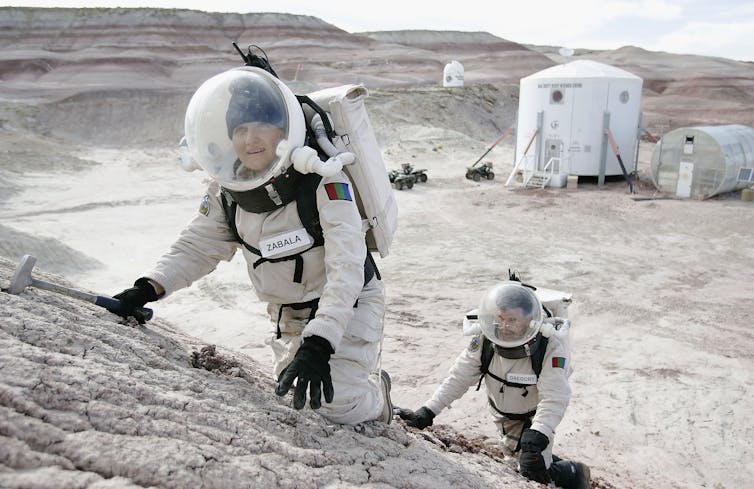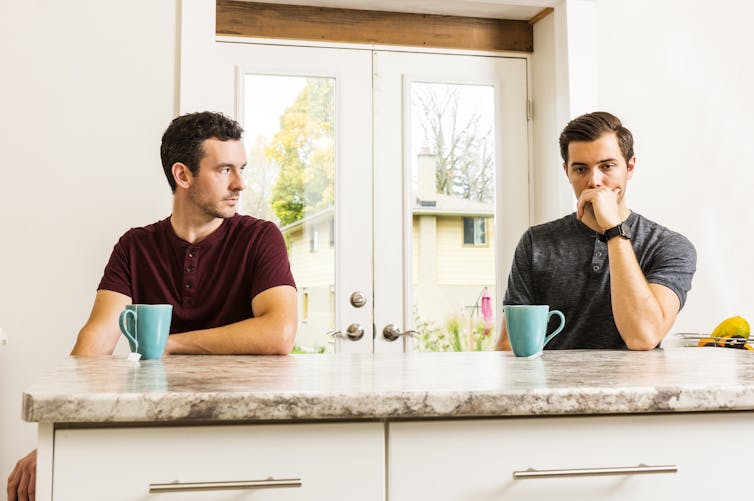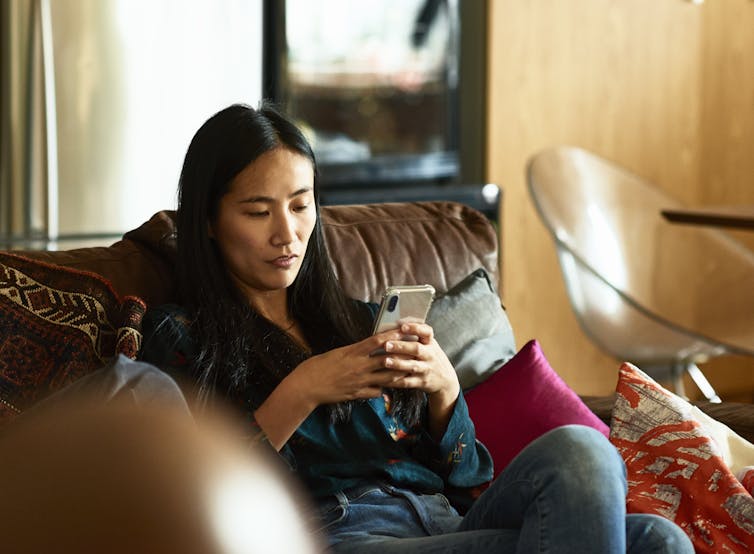I was supposed to travel to “Mars” this month. The plan was to stay two weeks at the Mars Desert Research Station – actually in the Utah desert – to simulate human operations on the red planet. Eight of us were to live in a two-story cylinder, 24 feet in diameter. We would conserve water and put on mock spacesuits every time we ventured outside.

But, in an ironic twist, the coronavirus pandemic and the worldwide spread of social distancing put on hold our simulation of isolation on Mars.
My main goal had been to collect data for my dissertation. I research groups in space-analog environments – isolated and confined places that share characteristics with human space missions. I’m especially interested in the way gender contributes to individuals’ influence within a group and how men and women manage their emotions in isolation and confinement.
I will not go to “Mars” this spring. As I am self-isolating at home, though, I keep thinking about what lessons for future space travel the current situation can provide. Astronauts have shared tips on how to survive long periods of loneliness and isolation. Maybe in return, the experiences of millions living under lockdown can offer insights into previously understudied social effects of isolation and aid future space travel.
Let me be clear: By no means am I denying the seriousness of the pandemic, and I am not reducing vitally important social distancing measures to a set of convenient social observations.
However, the more researchers understand the social effects of isolation on regular people – as opposed to those certified to have “the right stuff” – the better we will be prepared for the future, whether another wave of pandemic or interplanetary space travel.

Homes as real-world isolation capsules
Most group behavior research in space and space-analog environments focuses on leadership, cohesion and conflict – factors that affect teams’ performance and their ability to complete tasks. It makes sense, as astronauts are first and foremost a team of co-workers on a specific mission.
But, by focusing on the professional level, researchers overlook other potential relationships between crew members – such as family ties or intimacy. It is not a minor detail: Interpersonal relationships can certainly change dynamics of group behavior. If you’ve ever shared a workplace with a romantic couple, for instance, you probably know there can be some drama.
So far, only one married couple has been to space. Researchers suggest that couples are better equipped to handle isolation because of mutual social support. Having couples on board makes the team feel closer as a whole.
However, anecdotal evidence from China suggests that divorce rates jumped after the quarantine. This factoid suggests that it’s not clear whether average real-world couples are better suited for isolation than single individuals.
Gender dynamics, at home and in space
Now, researchers like me have an opportunity to understand how couple dynamics influence life in isolation – including sex and sexuality, questions that NASA is not eager to address. While pregnancy can be dangerous, intimacy and sexuality can improve emotional and mental well-being over long periods of social isolation.
In addition to intimate relationships, current isolation conditions mean researchers could pay more attention to structural gender inequalities accentuated by the pandemic. Women in general do more unpaid domestic and care labor, as well as more emotional labor – taking care of others’ feelings and well-being in addition to their own.
Now, their toll is increasing. Men and women have the same general goal – to survive the pandemic and its aftermath – but they experience the quarantine differently. In most middle-class families, the traditional work-home divide is now gone, as both partners work from home. But women are still likely to spend more time running the household, including child and elderly care.
While at this stage there are no screaming toddlers in space, space-analog research shows similar trends of women taking care of other crew members. The widespread lockdown could allow researchers to get more data on how social norms and expectations about each gender – for example, who is supposed to offer more emotional support – influence behavior in mixed-gender groups in highly uncertain and stressful situations.

Connecting while physically apart
Whether you are in deep space or in quarantine, communication with family and friends outside is crucial for your well-being.
In the past weeks, social lives have moved online, from work conference calls to Friday night trivia. The current situation can help to settle the debate whether online communication can or cannot replace real-life conversations. What forms of digital communications are closest to meeting a friend for a real cup of coffee? How often should astronauts host a digital happy hour en route to Mars?
There is no doubt that coronavirus-caused social isolation will take a toll on individual and collective mental health. But staying home saves lives. Maybe this experience will also provide lessons on how to plan for future cities and social life on another planet.
[You need to understand the coronavirus pandemic, and we can help. Read The Conversation’s newsletter.]

